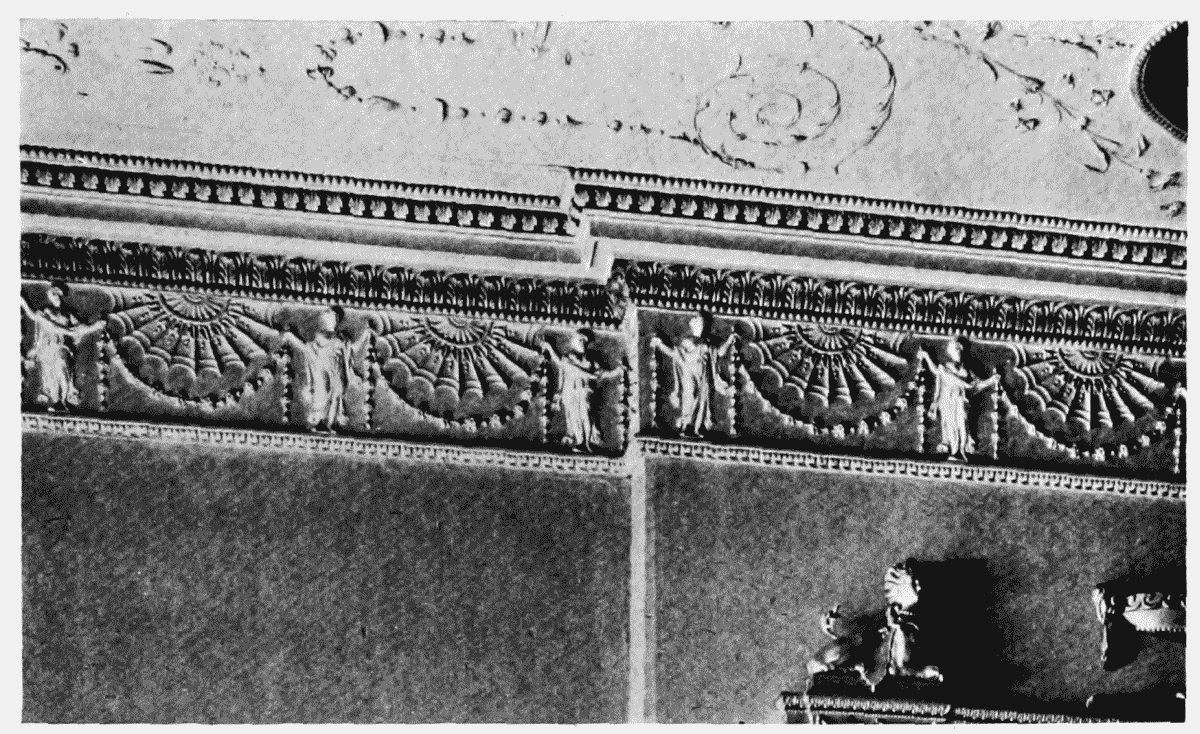Survey of London: Volume 5, St Giles-in-The-Fields, Pt II. Originally published by London County Council, London, 1914.
This free content was digitised by double rekeying. All rights reserved.
'No. 1, Bedford Square', in Survey of London: Volume 5, St Giles-in-The-Fields, Pt II, ed. W Edward Riley, Laurence Gomme (London, 1914), British History Online https://prod.british-history.ac.uk/survey-london/vol5/pt2/pp152-153 [accessed 4 May 2025].
'No. 1, Bedford Square', in Survey of London: Volume 5, St Giles-in-The-Fields, Pt II. Edited by W Edward Riley, Laurence Gomme (London, 1914), British History Online, accessed May 4, 2025, https://prod.british-history.ac.uk/survey-london/vol5/pt2/pp152-153.
"No. 1, Bedford Square". Survey of London: Volume 5, St Giles-in-The-Fields, Pt II. Ed. W Edward Riley, Laurence Gomme (London, 1914), British History Online. Web. 4 May 2025. https://prod.british-history.ac.uk/survey-london/vol5/pt2/pp152-153.
In this section
LXIX.—No. I, BEDFORD SQUARE. (fn. 1)
Ground landlord and lessee.
Ground landlord, The Crown; lessee, Weedon Grossmith, Esq.
General description and date of structure.
This house fills a gap between the premises in Bloomsbury Street (formerly Charlotte Street) and those forming the eastern block of the square. It is distinctive in its elevation (63), and has marked characteristics of a Leverton design. (fn. c1) The well-proportioned entrance, though finished in plaster work, is highly ornamented, the detail being unusually refined (Plate 64). The introduction of an ornamental panel above the main cornice of the building gives a graceful balance to the composition. In passing, it may be noticed that the cornice of No. 2, although not in alignment with that of this house, is of the same section. (fn. c2)
The entrance doorway affords direct access to a hall of uncommonly beautiful design, extending the full width of the house, and divided by piers into three bays (Plate 62). The central bay has two recesses, and is ceiled with a decorative plaster oval dome resting on pendentives and segmental arches (Plate 66). The right-hand bay has semi-circular ends (Plate65) flanked by niches, and there is also a niche in the centre of the side wall, over which is placed a circular plaque. The bay to the left contains the staircase (Plate 65). This also has semi-circular ends. The stone steps have shaped soffits, the balustrades being of bronze, of graceful curvature and tasteful design. The principal rooms have fine decorative detail to the doors and windows, and rounded internal angles are given to the walls. The dining room contains a carved wood mantelpiece (Plate 67) and "Empire" grate; the chimney breast above being ornamented with an oval plaque surrounded with floral festoons. The lowest member of the cornice should be noticed, as it is similar to that in the dining room of No. 13, Leverton's own house, and is composed of diminutive Greek Doric pillars suspended by their capitals, a somewhat unusual form of decoration suggestive of tassels.
The first floor has two rooms, that in the front containing a white marble chimneypiece. The rear room is the studio. The chimneypiece is of white marble, very delicately carved with a fine pier glass over. Great care has been taken with the ornamental plaster frieze (illustrated on the next page) and ceiling (Plate 68), both of which are of exceptional merit. The painted panels are said (fn. 2) to be by Antonio Zucchi. It is difficult to dissociate his work from that of Angelica Kauffmann, whom he afterwards (1781) married, but on close examination it will be noticed that the panels reputed to be by the latter in No. 25 (fn. 3) (Plate 85) are somewhat different in arrangement and composition.

No. I, Bedford Square, Ornamental Plaster Frieze, Rear Room, First Floor
The studio cornice and ceiling have been repeated in No. 10, even to the paintings, a fact which points to one controlling influence in the decorative treatment of these houses.
Condition of Repair.
The premises are in good repair.
Biographical notes.
According to the ratebooks the first occupier of No. 1 was Sir Lionel Lyde, who took up his residence here in 1781. In 1791 he was succeeded by Geo. Gosling, who remained until after the close of the century.
In the Council's collection are:—
(fn. 4) Ground and first floor plans (measured drawing).
(fn. 4) Front view (photograph).
(fn. 4) Entrance porch (measured drawing).
(fn. 4) Entrance hall, view looking south (photograph).
(fn. 4) Entrance hall, view looking north, showing staircase (photograph).
(fn. 4) Centre portion of ornamental ceiling in entrance hall (photograph).
(fn. 4) Chimney breast in rear room on ground floor (photograph).
General view of rear room on first floor (photograph).
Chimneypiece in rear room on first floor (photograph).
(fn. 4) Ornamental plaster frieze in rear room on first floor (photograph).
(fn. 4) Ornamental plaster ceiling with painted panels in rear room on first floor (photograph).